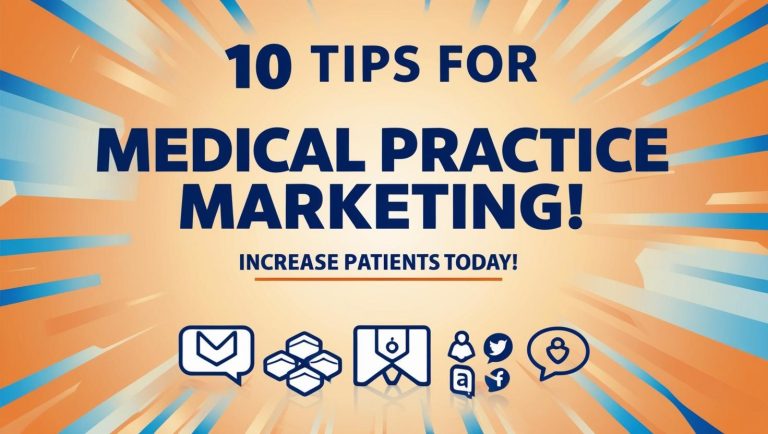Top Marketing Strategies for Dentists: A Complete Guide to Practice Growth

In today’s competitive dental landscape, being an excellent dentist is no longer enough—you need to be a marketing dentist too. With patients increasingly turning to Google searches before scheduling a dental visit, having robust marketing strategies is essential for practice growth and patient acquisition.
Effective dental marketing can transform a struggling practice into a thriving business, helping you attract new patients while retaining your existing ones. This comprehensive guide will explore proven marketing strategies that dental practices can implement to boost their online presence, engage with potential patients, and ultimately grow their dental business.
Introduction to Dental Marketing
Dental marketing encompasses all strategies and activities designed to promote dental services, attract new patients, and retain existing clients. In today’s digital age, marketing has evolved from traditional methods like print ads and billboards to sophisticated online strategies.
For most practices, effective marketing is no longer optional—it’s a critical component of business success. A well-executed marketing plan helps dental practices:
- Stand out in a crowded market
- Connect with prospective patients
- Build a loyal patient base
- Showcase specialized services
- Drive consistent practice growth
Whether you’re a new dentist establishing your first practice or managing multiple locations, understanding the fundamentals of dental marketing will give you a competitive advantage in your local market.
Building a Strong Online Presence
Your online presence serves as the digital front door to your dental practice, often creating the first impression for prospective patients long before they step into your office.
Professional Website Development
A professional website is the cornerstone of your digital marketing strategy. Your dental practice website should:
- Feature a clean, modern design that reflects your brand identity
- Be mobile-responsive for patients searching on phones
- Include clear calls-to-action for appointment scheduling
- Showcase your services with detailed descriptions
- Load quickly to prevent potential patients from leaving
- Include testimonials from satisfied patients
Remember that your website isn’t just an online brochure—it’s a patient acquisition tool that should convert visitors into appointments.
Google Business Profile Optimization
Your Google Business Profile (formerly Google My Business) significantly impacts your visibility in local search results and Google Maps. To optimize your profile:
- Verify your business and ensure NAP (Name, Address, Phone) consistency
- Add high-quality photos of your office, team, and facilities
- Encourage satisfied patients to leave positive reviews
- Respond promptly to all reviews, both positive and negative
- Post regular updates about your services or special offers
- Include your hours of operation and services offered
A well-optimized Google Business Profile helps your dental practice appear in the valuable “local pack” of search results when potential patients search for a “dentist near me.”
Online Directories and Reviews
Beyond Google, your practice should maintain accurate listings on:
- Healthcare-specific platforms like Healthgrades and Zocdoc
- General business directories such as Yelp
- Insurance provider directories
- Local chamber of commerce listings
Online reviews are particularly crucial for dental practices. According to research, 72% of patients use online reviews as their first step in finding a new dentist. Implementing a systematic approach to generating positive reviews from your patient base can dramatically improve your online reputation.
Website Optimization
Your website isn’t just a digital business card—it’s often the first interaction potential patients have with your practice. Optimizing it properly can significantly increase conversion rates.
User Experience Optimization
To create a website that converts visitors into patients:
- Implement intuitive navigation that makes it easy to find information
- Place call-to-action buttons strategically throughout the site
- Organize content according to patient needs rather than clinical categories
- Ensure accessibility for all potential patients
- Make your contact information visible on every page
- Include an online appointment scheduling tool
The goal is to make it as easy as possible for a potential patient to take the next step and contact your practice.
Technical SEO Elements
Technical SEO ensures that search engines can properly crawl and index your website:
- Optimize page loading speed for better user experience and search rankings
- Ensure mobile responsiveness for all device types
- Implement proper heading structure (H1, H2, etc.)
- Create an XML sitemap to help search engines index your content
- Secure your site with HTTPS to protect patient information
- Use schema markup to help search engines understand your content
Working with dental marketing experts who understand these technical elements can give your practice a significant advantage in search results.
Content Marketing
Content marketing allows dental practices to showcase expertise, educate patients, and build trust before the first appointment is ever scheduled.
Types of Content for Dental Practices
Effective content types for dental marketing include:
- Blog posts explaining common procedures or addressing patient concerns
- Educational videos demonstrating proper oral care techniques
- Infographics illustrating dental concepts in an accessible way
- Patient testimonials showcasing successful treatments
- Email newsletters with oral health tips and practice updates
- Social media posts highlighting your team and culture
The most successful dental content translates complex dental concepts into accessible, actionable information for patients.
Content Strategy Development
A strategic approach to content includes:
- Identifying your target audience and their concerns
- Researching relevant keywords for your services and location
- Creating a content calendar to maintain consistency
- Determining the right channels for distribution
- Establishing metrics to measure content performance
Dental marketing companies often help practices develop comprehensive content strategies that align with broader business goals while addressing the specific needs of potential patients.
Local Search Engine Optimization
For dental practices, local search engine optimization is not just a marketing tactic—it’s the lifeline that connects you with potential patients in your immediate service area.
Local SEO Fundamentals
Essential local SEO strategies include:
- Optimizing your Google Business Profile with accurate information
- Ensuring NAP consistency across all online platforms
- Incorporating location-specific keywords throughout your website
- Building local links from community organizations and businesses
- Creating content relevant to your local community
- Establishing listings in local directories and industry-specific platforms
Local SEO is particularly crucial for dental practices since the vast majority of patients seek providers within a limited geographic radius of their home or workplace.
Advanced Local SEO Tactics
To gain an edge over competitors:
- Create dedicated pages for each service area or neighborhood you serve
- Implement local schema markup to improve visibility in search results
- Develop a comprehensive review management strategy
- Participate in local events and document them online
- Create location-based content addressing local oral health concerns
Dental marketing experts can help implement these advanced tactics to maximize your visibility to your local audience.
Patient Engagement and Retention
While attracting new patients is crucial, the most successful marketing dentists know that retaining existing patients delivers the highest return on investment.
Patient Engagement Strategies
Effective engagement approaches include:
- Personalized communication based on patient history and preferences
- Educational programs on oral health topics
- Community-building events and patient appreciation activities
- Regular feedback mechanisms to improve service
- Social media interaction to maintain relationships
- Patient portals for convenient access to information
- Loyalty programs that reward continuing care
These strategies help build stronger relationships with your patient base, encouraging loyalty and patient referrals.
Technology-Enabled Engagement
Modern technology provides multiple tools for enhanced patient engagement:
- Automated appointment reminders to reduce no-shows
- Treatment plan visualization tools to increase acceptance rates
- Patient education apps for improved home care compliance
- Teledentistry options for convenience and accessibility
- Online bill payment systems for simplified transactions
- Electronic health records for seamless information sharing
The right technology investments can significantly improve patient satisfaction while reducing the workload for your front desk team.
Marketing Campaigns
Strategic marketing campaigns allow dental practices to focus resources on specific goals, whether launching new services, targeting particular patient segments, or addressing seasonal opportunities.
Campaign Types for Dental Practices
Effective campaign types include:
- New patient acquisition campaigns targeting specific demographics
- Service promotion campaigns highlighting particular procedures
- Seasonal campaigns tied to specific times (back-to-school checkups, end-of-year insurance benefits)
- Reactivation campaigns to re-engage dormant patients
- Referral programs to encourage patient referrals
- Community outreach initiatives that build local awareness
Each campaign type requires a specific approach and messaging strategy to achieve maximum impact.
Campaign Channel Selection
Dental marketing campaigns typically leverage multiple channels:
- Google Ads campaigns targeting specific procedures or concerns
- Social media advertising on platforms like Facebook
- Email marketing to existing patient lists
- Direct mail to specific neighborhoods or demographics
- Community events and educational workshops
- In-office promotions and signage
Working with dental marketing companies can help you determine the optimal channel mix for your specific goals and budget.
Online Directories and Reviews
In the digital age, online reviews function as modern word-of-mouth, significantly influencing potential patients’ decision-making processes.
Directory Management
Key directories for dental practices include:
- Google Business Profile
- Yelp
- Healthgrades
- Zocdoc
- Insurance provider directories
- Local business listings
Each listing should be claimed, verified, and optimized with consistent information, compelling descriptions, high-quality images, and current service offerings.
Review Generation and Management
To build a strong online reputation:
- Implement a systematic approach to requesting reviews from satisfied patients
- Make the review process as simple as possible
- Respond promptly to all reviews, both positive and negative
- Address concerns constructively and take conversations offline when necessary
- Monitor reviews across all platforms regularly
- Use review insights to improve practice operations
Remember that HIPAA compliance is essential when responding to reviews—never confirm someone is a patient or discuss treatment details publicly.
Measuring Success and Growth
Without proper measurement, dental marketing becomes guesswork—successful marketing dentists rely on data to make informed decisions about where to invest their resources.
Key Performance Indicators
Essential metrics for dental marketing evaluation include:
- New patient acquisition rates by marketing channel
- Cost per acquisition for each marketing effort
- Treatment acceptance rates
- Patient lifetime value
- Website conversion rates
- Return on marketing investment
- Patient retention rates
- Referral rates from existing patients
Tracking these metrics allows practices to optimize their marketing budget allocation for maximum return.
Analytics Implementation
Proper measurement requires appropriate tracking tools:
- Google Analytics for website performance and user behavior
- Call tracking to attribute phone calls to specific marketing efforts
- Practice management software for patient source tracking
- Social media analytics for engagement metrics
- Email marketing performance data
- Patient satisfaction survey results
Dental marketing experts can help set up comprehensive tracking systems that provide measurable results and actionable insights.
Creating a Unique Brand Identity
In increasingly competitive markets, distinctive branding helps dental practices stand out and attract patients who align with their values and approach.
Brand Development Process
Creating a memorable brand involves:
- Identifying core values and mission
- Analyzing competitors’ positioning
- Developing target patient personas
- Defining your unique place in the market
- Creating visual identity elements (logo, colors, typography)
- Establishing a consistent brand voice
- Documenting guidelines for implementation
Your brand should reflect what makes your practice unique—whether that’s specialized services, a particular patient focus, or your approach to patient care.
Brand Implementation Channels
Consistent branding should extend across:
- Website design and content
- Social media profiles
- Print materials (business cards, brochures)
- Office signage and environment
- Staff uniforms and appearance
- Patient communications
- Community presence and sponsorships
When properly executed, branding influences not just marketing but every aspect of practice operations, creating a cohesive experience at every patient touchpoint.
Technical SEO
Technical SEO provides the foundation for dental practices to achieve optimal search visibility, ensuring that search engines can effectively crawl, index, and rank their websites.
Technical SEO Fundamentals
Core elements include:
- Site structure with logical organization and clear hierarchy
- Clean URL architecture incorporating target keywords
- XML sitemap submission to search engines
- Robots.txt file configuration
- Proper implementation of canonical tags
- HTTPS security implementation
- Effective management of redirects
- Custom 404 error pages
- Appropriate international targeting if needed
These technical elements create the foundation for all other SEO efforts and should be prioritized when working with dental marketing companies.
Performance Optimization
Site performance factors include:
- Page speed optimization through compression and code minimization
- Mobile responsiveness across all device types
- Core Web Vitals metrics optimization
- Image optimization for faster loading
- JavaScript and CSS optimization
- Adequate hosting with appropriate response times
- Content delivery network implementation for faster loading
Google increasingly prioritizes user experience factors in rankings, making performance optimization essential for visibility in search results.
Patient Communication
Effective patient communication builds trust, reduces anxiety, improves treatment compliance, and ultimately enhances satisfaction and retention.
Communication Channels
Modern dental practices should utilize multiple communication methods:
- Phone interactions for appointment scheduling and follow-up
- Email communications for newsletters and treatment information
- Text messaging for appointment reminders
- Patient portal messages for secure communications
- Social media engagement for community building
- Video communication for consultations and education
- In-office conversations for personal connection
Each channel serves different purposes and should be integrated into a cohesive communication strategy.
Communication Strategy Elements
Key components include:
- Consistent tone and voice across all communications
- Appropriate message frequency that informs without overwhelming
- Channel selection based on message purpose and patient preferences
- HIPAA compliance in all interactions
- Crisis communication planning
- Multi-language support where appropriate
- Accessibility considerations for diverse patient needs
The most successful dental practices create communication strategies that feel personal and caring despite serving hundreds or thousands of patients.
Marketing Budget and Resources
Strategic allocation of marketing resources enables dental practices to maximize returns while maintaining sustainable growth.
Budget Development Process
Creating an effective marketing budget involves:
- Aligning marketing investments with overall practice goals
- Evaluating current marketing performance and costs
- Analyzing competitor marketing activities
- Prioritizing channels based on performance and potential
- Balancing ongoing expenses with campaign-specific spending
- Establishing ROI targets for different marketing activities
- Planning expenditures throughout the fiscal year
- Setting aside contingency funds for opportunities
Dental marketing budgets typically range from 3-10% of gross revenue depending on practice maturity, competitive landscape, and growth objectives.
Resource Allocation Considerations
Key decisions include:
- Whether to handle marketing in-house or partner with dental marketing companies
- Allocating team member time to marketing activities
- Investing in technology tools for implementation and measurement
- Developing necessary skills through training
- Creating or purchasing creative assets
- Ensuring compliance with dental advertising regulations
The most cost-effective approach often combines internal resources for day-to-day activities with specialized expertise from dental marketing experts for strategy and technical implementation.
Team Training and Support
The entire dental team plays a crucial role in marketing success, making comprehensive training essential for consistent implementation.
Marketing Responsibilities by Role
Different team members contribute to marketing success:
- Front office team handles phone inquiries and first impressions
- Treatment coordinators present treatment plans and discuss finances
- Dental assistants and hygienists build relationships during appointments
- Dentists convey expertise and build trust
- Office managers oversee marketing implementation
When everyone understands their role in the practice’s marketing efforts, the result is a consistent, authentic experience that naturally attracts and retains patients.
Training Program Components
Effective marketing training includes:
- Education on the practice’s marketing philosophy and brand
- Communication skills development
- Phone skills for converting inquiries to appointments
- Social media guidelines and participation parameters
- Treatment presentation techniques
- Review generation training
- Cross-selling of additional services
- Handling patient objections constructively
Regular training sessions and updates keep the entire team aligned with marketing goals and strategies.
Continuous Improvement
The dental marketing landscape evolves constantly, requiring practices to embrace ongoing optimization rather than static strategies.
Continuous Improvement Framework
A systematic approach includes:
- Regular review of marketing performance metrics
- Benchmarking against industry standards and past results
- Identifying underperforming areas and opportunities
- Testing new approaches to improve results
- Implementing successful changes across all channels
- Repeating the process with new focus areas
This cycle of evaluation and refinement ensures that marketing strategies remain effective as technology, patient expectations, and competitive landscapes change.
Emerging Trends Monitoring
To maintain competitive advantage, dental practices should track developments in:
- Search algorithm updates that affect visibility
- Social media platform evolution and new features
- Content format preferences and consumption habits
- Marketing technology advancements
- Patient communication preferences
- Competitive landscape changes
- Regulatory developments affecting dental marketing
- Economic factors influencing patient behavior
The most successful dental practices approach marketing with curiosity and flexibility, regularly questioning assumptions and testing new approaches.
Conclusion
Effective dental marketing is no longer optional—it’s essential for practice growth and sustainability in today’s competitive landscape. By implementing the strategies outlined in this guide, dental practices can create comprehensive marketing systems that attract new patients, retain existing ones, and build a thriving business.
The most successful marketing dentists understand that marketing is not a one-time effort but an ongoing process of connecting with patients, demonstrating expertise, and communicating value. When executed properly, these strategies create a virtuous cycle of growth, with each new satisfied patient becoming an advocate who helps attract more patients to your practice.
Start by evaluating your current marketing efforts against this guide, identifying three areas where you can make immediate improvements, and developing a plan to implement changes systematically. Whether you work with dental marketing companies or develop in-house expertise, the investment in effective marketing will pay dividends in practice growth for years to come.




